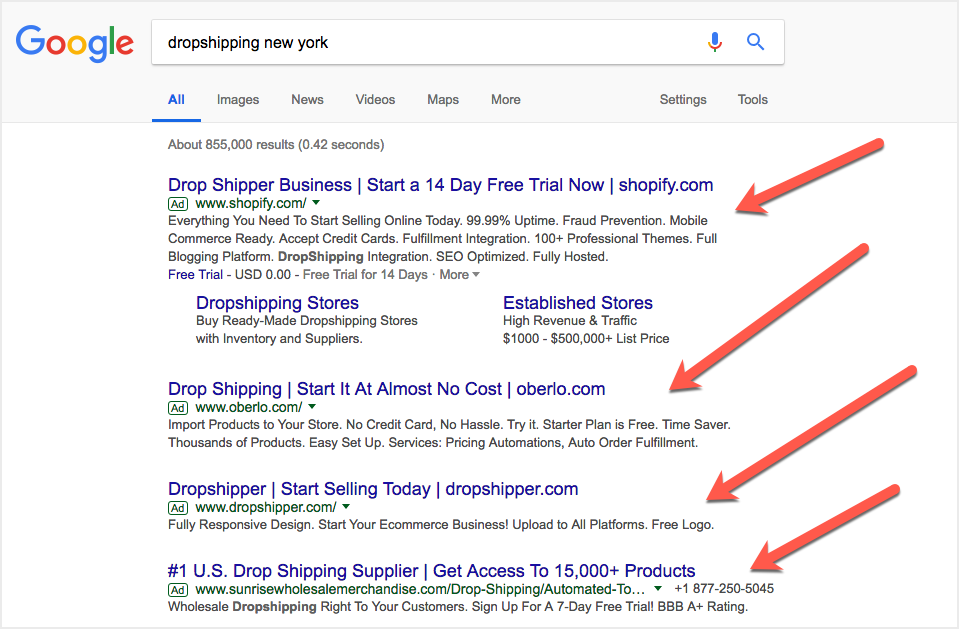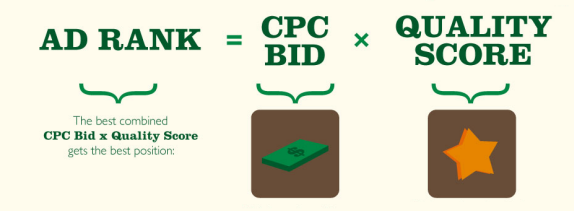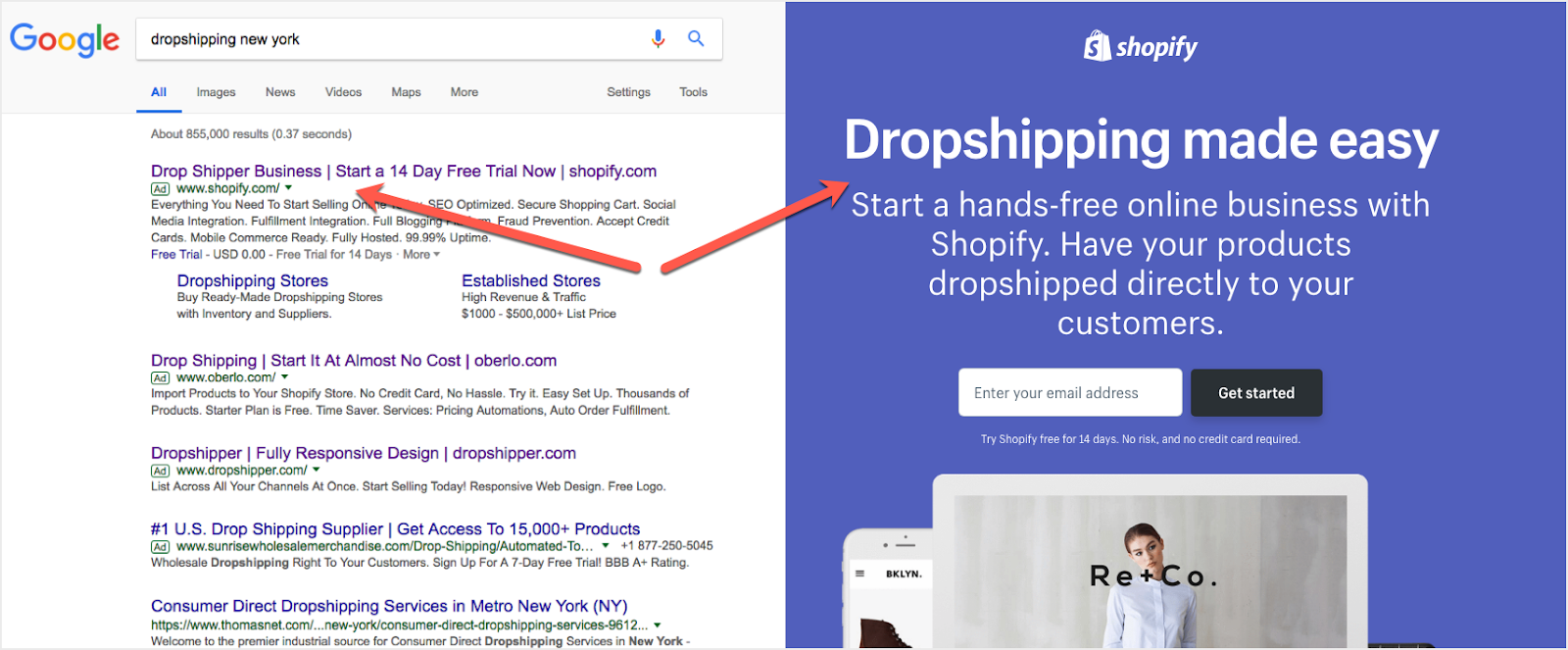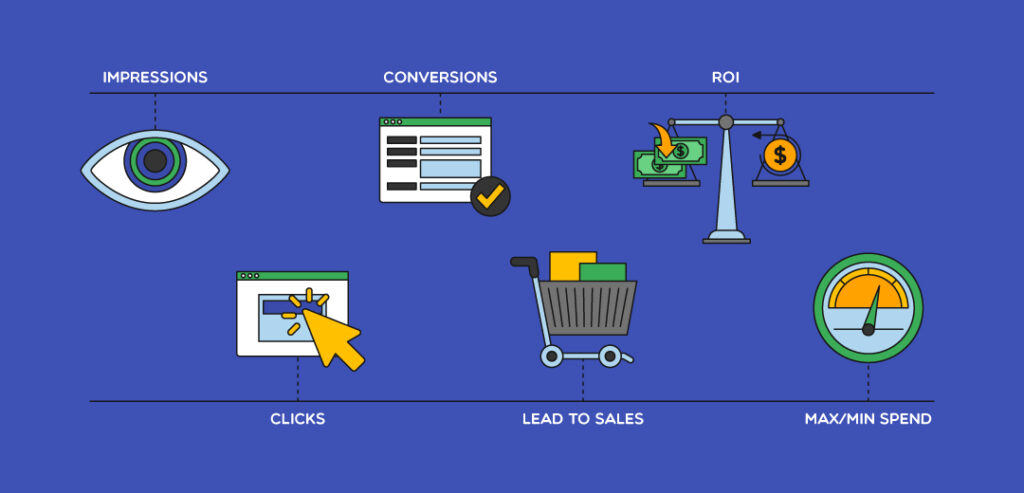As an agency that offers PPC services, it’s your job to effectively communicate the value of your engagement to your clients. This means looking at the world through their eyes and understanding an appropriate starting point for conveying our value proposition.
If you go into a sales meeting or submit a proposal jam-packed full of jargon, it may ‘feel’ intelligent on the surface, but in the end, you are just confusing your clients and diminishing your chance of closing or retaining their patronage.
Most business people don’t care about PPC metrics. What they do care about are qualified leads and then customers – the rest is secondary. This is their reference point. So when you are designing your next PPC management proposal, you have to bridge the gap between the world of PPC and business without confusing anyone.
Of course, PPC metrics are critical in measuring and articulating the value of your services, but in isolation, they are a foreign language to your clients. The real point of difference comes in your ability to effectively explain these data points from the perspective of the person sitting on the other end of the phone/table/video conference.
To help you out, the rest of this article will break down the seven most crucial PPC data points, what they mean, and how you should communicate them to clients in Google Ads proposals.
Let’s get started…
#1 Impressions
What is an impression?
An impression is recorded at the point when your ad is displayed on a page or in a search result. Whether that’s a search ad, banner, or text-based ad, your ad impressions are literally the number of times the ad has been shown on a computer or mobile screen.
For example, in the below Google search, there are four text-based ads. Each of these would have recorded an impression metric when we did this search, even though we never clicked on any of them.

How should I communicate impressions to my client?
Impressions are used as a globally recognized metric for measuring the reach of almost any digital marketing campaign you can think of – PPC or otherwise. However, what are they really telling you?
Too many PPC agencies over-emphasize the importance of impressions because their clients get excited when they see a big number on a report. But it’s a false-positive.
In reality, an impression may be no more than a glance, a scroll, a passing flash of light on someone’s screen. Impressions keep an un-informed client interested for a month or two, but soon they will realize that unless impressions result in clicks, and clicks result in inquiries or purchases, then those impressions are insignificant to the prosperity of their business.
With that being said, impressions do play a part in optimizing the performance of your client’s campaigns, and subsequently, you should be confident in explaining their value to clients.
Here are three reasons why you should include impressions in a Google Ads proposal:
- They provide a top-tier data point that you can compare and contrast to other important metrics such as clicks, conversions, and sales. For example, the statement “For every 1,000 ad impressions you are receiving 5 new inquiries” is more meaningful than “Your ad campaign had 1,000 impressions.”
- By comparing and contrasting impression metrics with other engagement or conversion metrics you can work towards optimizing campaign performance over time. For example, 1,000 impressions may receive 5 new inquiries in the first month, but with some tweaks and improvements to your targeting, you boost the inquiry rate to 10 per 1,000 impressions in month two. This kind of narrative becomes interesting to your client, not the sheer number of impressions.
- They provide a number that you can use to articulate the reach of the campaign. Reach = Brand Awareness. Not to mention that impressions are essentially free. With PPC you don’t pay until you get a click.
#2 Clicks and Click Through Rate (CTR)
What does Click Through Rate (CTR) mean?
How should I communicate CTR to my client?
As an isolated metric, your CTR is more meaningful to your client than the number of impressions. It tells them how receptive those that view the ads are to the design, messaging, and offer you put forward. But that’s not the whole story…
Much like impressions, ‘clicks’ mean nothing if they don’t turn into sales. So be careful amping up the importance of the CTR to your clients, unless of course, you are relating it to the more essential revenue metrics such as conversions, inquiries, and phone calls.
In essence, it’s easy to get a high click-through rate without generating bottom-line revenue. For example, your ad messaging may be over-selling your offer, it could be unrelated to the landing page users see after they click, or people may be perfectly interested but become frustrated and click away if the landing page doesn’t load fast enough.
Still, CTR is without a doubt a vital piece of data to track and report on, and educating your clients about what it is and why it matters will contribute to the success of your relationship.
Here are three reasons that CTR is a valuable metric to include in a Google Ads proposal:
- A good CTR contributes to your ‘Ad Rank’ because it improves your quality score. This determines where your ad shows up in search results compared to other ads being served for the same keywords.

- It gives you a good measure of how effective your placement, targeting, bid, and messaging are performing – all of which have a huge impact on CTR. If these elements align with a well-optimized landing page and offer then improving your CTR could increase your return on ad spend. That is something your client cares about.
- It is a critical step in the buying equation: Impression > Click > Conversion > Sale. Without accurate data about your campaign’s CTR, you are unable to make educated decisions about how to improve your performance because you are missing a step in the customer’s purchase process.
#3 Conversions and Conversion Rate
What does Conversion Rate mean?
How should I communicate the conversion rate to my client?
As we make our way down the PPC data tree from Impressions to Clicks and now to Conversions, the value of each data point in isolation becomes more and more meaningful for your clients. This metric is telling your clients exactly how many leads/inquiries/phone calls they have received from the campaign and how many clicks were needed to hit that number.
So what is a good Conversion Rate? A good Conversion Rate is contextual. It depends on your industry, ad delivery platform, and an array of other elements that you need to be aware of when discussing the campaign outcomes with your clients.
A low Conversion Rate – compared to industry benchmarks – usually indicates a disconnect between your ad and its message with the experience someone has on your website. A high Conversion Rate, on the flip side, points to a strong correlation between these two elements.
Much like the relationship between Impressions and Clicks, the connection between Clicks and Conversion Rate gives you an insight into how well your website and landing page are performing as an extension of your ad messaging and offer.
See how Shopify do this in the drop shipping search we referred to earlier in this article by using related copy in their ad and landing page:

#4 Lead to Sales Conversion Rate
What is the Lead to Sales Conversion Rate?
How should I communicate this metric to my client?
It goes without saying that this is a data point your client is going to be interested in. After all, this shows them exactly how many PPC leads they need in order to close new business.
However, be careful when discussing this metric not to overpromise. The Lead to Sales Conversion Rate is usually one that an agency has minimal influence over.
Yes, you can optimize a PPC campaign to get more impressions, clicks, and leads, but once a prospect converts into a lead the responsibility to close that lead falls into the hands of the client. Either an internal sales team will follow up with a new lead, or someone on the client’s team will take their phone call.
Don’t promise ‘Sales’ in your PPC management proposal. You can’t control this part of the equation. Make yourself accountable to the things you can control – continual improvement and optimization of campaign performance – but don’t lock yourself into a hard-edged number from a sales perspective. Educate the client about the things you can affect and how you need the client to play a part in the success of the campaign. Sure, you can provide advice and guidance to help them enhance their internal sales and follow up processes, but this should be an add-on rather than the core deliverable you are on the hook for.
#5 ROAS
What is ROAS?
How should I communicate ROAS with my client?
ROAS will help you educate your clients about the performance of an ad campaign, the direction of your strategy, and help them decide where they should invest ad budgets in the future. But you will need to clarify their understanding of what ROAS is.
When discussing this figure with your clients, be aware that your ROAS figure doesn’t usually consider other expenses such as PPC management fees, affiliate or partner revenue, and production costs. Which is why it is a useful metric for determining the success of a campaign, but shouldn’t be used as the only decisive measure for investing more money. That’s where ROI comes into the equation.
#6 ROI
What is ROI?
‘ROI’ refers to Return On Investment and is a measure that determines the outcome (or return) of an investment, less the cost, divided by the overall cost. From a PPC perspective, the ROI is calculated using the sales generated by a campaign, the campaign spend, and other related expenses. For example, if a PPC campaign produces sales of $10,000 and the cost of that campaign is $8,000, then the ROI = ($10,000 – $8,000) / $8,000 = 25%.
The key difference between ROAS and ROI is that the ROI is a more holistic figure from a business perspective. It considers other expenses involved in revenue generation, whereas ROAS is a direct ratio between revenue and ad spend.
How should I communicate ROI to my client?
ROI is a tricky one to effectively communicate with your clients. As we mentioned previously, you shouldn’t be held directly accountable to ‘sales’ per se because it may not be something you have hands-on influence over.
Here are a couple of ways to handle this challenging discussion:
- Be held accountable for leads. You could talk with your client about the lack of influence you have over the internal sales process and instead have them clearly articulate the amount of ‘leads’ they would be happy to acquire from their PPC ad spend. The problem with this approach is, whether you like it or not, they will be judging the success of the campaign based on sales ROI anyway. So even if they agree to a lead-based goal, you could lose the account if their team doesn’t close enough sales.
- Be held accountable for sales, but build in client responsibility. This is the way we recommend. Rather than distancing yourself from the elephant in the room (sales and revenue) talk about it openly with your client. After all, this is what they want, and this is what determines how much they will spend with you. With this approach, you are asking the client to commit to a certain Lead to Sales Conversion Rate. If based on their estimates for this they don’t hold up their end of the bargain, but you deliver them enough leads to hit your combined ROI and sales targets, then you can confidently say you have met the agreed outcomes of the engagement.
#7 Max/Min Spend
What is the Max/Min spend amount for PPC?
How should I communicate these metrics to my client?
While the Max/Min Spend is determined by your market research, you should collaborate with your client on setting a budget based on the goals and expectations you document for the campaign as a whole.
When communicating the Max/Min Spend with your clients the most important thing to ensure is that their Minimum Budget aligns with the Minimum Spend you have determined.
There is a tendency for inexperienced PPC users to start a campaign with a very low budget, hoping that they can “ramp it up when it starts working.” This is one of the most common reasons businesses give up on PPC. The reality is that PPC campaigns take time to mature. You need time to compile enough data for both Google, and the PPC experts at your agency, to tweak and optimize the performance of the campaign. If your budget is too low, then you won’t obtain statistically relevant data for making decisions. This will drive up the cost of acquiring leads and sales, leaving your client unhappy with the results.
Your client may say that they have an ideal budget of $2000 per month and want to target X, Y and Z keywords in A, B and C locations. But when conducting your research and industry analysis for this campaign you discover that the Min Spend required to get meaningful results in their chosen space is $3,000. This is an important metric to communicate with your client to see if they are willing to adjust their budget to fit with the market opportunity. Use your experience and expertise to inform your clients about this process and recommend a monthly spend that aligns with their desired outcomes.

